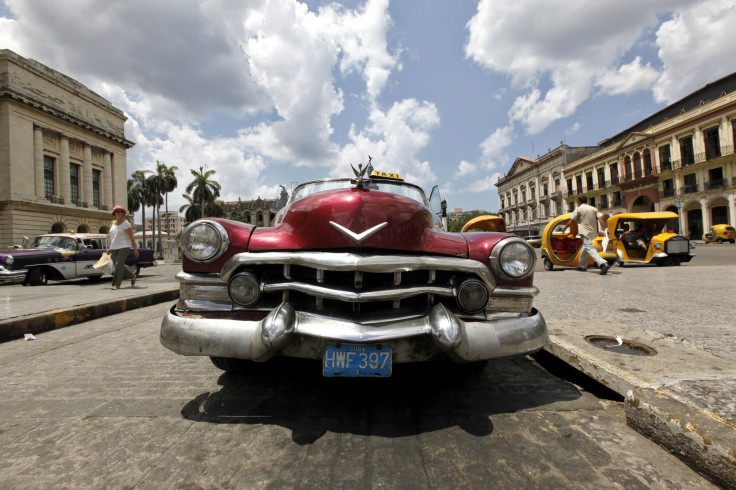Cuba's American Classic Cars: Only Lifting The US Embargo Will Save Country's Trove Of Well-Worn Wheels

As Cuba and the U.S. return to speaking terms after 54 years, the Caribbean nation has the potential to become a treasure trove of tens of thousands of Fords, Chevrolets, Studebakers and DeSotos from the 1940s and 1950s. But the classic cars will only appeal to the most committed collectors, those willing to take on serious restoration projects.
For more than a half-century Cuba’s American-made vehicles have taken a beating. Their owners have improvised repairs with limited resources. Many of the cars are used daily, often as taxis, with odometers that have rolled over so many times they no longer work. Though Cubans are aware of the vehicles’ cultural value, Cuba’s political and economic isolation has made car restoration impossible for most owners, especially considering that the average Cuban makes $240 a year.
“These cars have been used and used well,” said Juan Santamarina, a history professor from the University of Dayton who specializes in Cuba’s economic history. “I once rode in a 1947 Willys Jeep [in Havana] that had a Czech transmission and a rebar gear shift with a cue ball on top.”
Santamarina, an American citizen who was born in Cuba and communicates with family there by email, says the country has a number of car clubs whose owners long for the day when they can obtain genuine classic car parts from the U.S.
Over the years, owners have been forced to cobble repairs with whatever Soviet-era junk that’s been available. But Angelo Van Bogart, editor of Old Cars Weekly, is optimistic that Cubans are sitting on a “gold mine of great project cars.” And the cars that are too disheveled for a restoration project might hold coveted original parts. Cuba’s tropical climate means original parts would be in much better condition than ones from northern climates that are corroded from road salt.
“We know there are 1957 Chevrolet convertibles, and even a gull-wing Mercedes-Benz 300 SL coupe, and a 1954 Buick Skylark convertible in Cuba — all desirable and valuable enough to warrant restoration no matter the condition,” Van Bogart said by email. “If the embargo were to be lifted, undoubtedly more treasures in that island nation would become exposed.”
The New York Times reported in 2004 that Cuba has about 60,000 pre-1960 American cars. U.S. automakers have been barred since 1959 from selling cars in Cuba, so newer vehicles in the country’s insignificant automotive market tend to be unremarkable Russian Ladas and, more recently, Chinese Geelys.
The dream of finding that 1950s era Cadillac project car parked in a garage in Havana will have to wait, however. With the U.S. embargo in place, American auto parts can’t go to Cuba, and collector vehicles can’t be imported to the U.S. Congress would have to repeal the 1996 Helms-Burton Act, which strengthened America’s half century old economic blockade, before Cuba’s aging fleet of classics could be rescued by American car fans.
Van Bogart says that while lifting the embargo could open the way to finding some great, if heavily worn, classics, it would also erode a little of what makes Cuba so fascinating.
“If the embargo is lifted and the old American cars in Cuba are replaced by newer cars, the romance behind the idea that Cuban streets have been frozen in the 1950s would be gone forever,” he said.
© Copyright IBTimes 2024. All rights reserved.






















